Browse in the Library:
| Artist or Composer / Score name | Cover | List of Contents |
|---|---|---|
| ABRSM Piano Exam 2023-24 Grade 3 C3 THE ENTERTAINER – SCOTT JOPLIN |
 |
|
| ABRSM Piano Exam 2023-24 In The Groove by Mike Cornick |
 |
|
| ABRSM Piano Exam 2023-24 Indigo Moon by Elissa Milne |
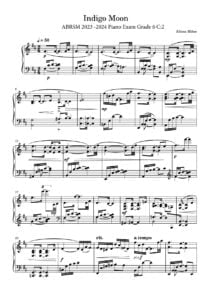 |
|
| ABRSM Piano Exam 2023-24 Jester’s Jig by Chee-Hwa Tan |
 |
|
| ABRSM Piano Exam 2023-24 Love Theme by Catherine Rollin |
 |
|
| ABRSM Piano Exam 2023-24 Minuet In G (Anonymous) |
 |
|
| ABRSM Piano Exam 2023-24 The Song Of Twilight by Yoshinao Nakada |
 |
|
| ABRSM Piano Exam Pieces Grade 1 2013 & 2014 syllabus |
 |
ABRSM Piano Exam Pieces Grade 1 2013 & 2014 syllabus |
| ABRSM Piano Exam Pieces Grade 1 2023 2024 |
 |
ABRSM Piano Exam Pieces Grade 1 2023 2024 |
| ABRSM Piano Exam Pieces Grade 1 2025 2026 |
 |
ABRSM Piano Exam Pieces Grade 1 2025 2026 |
| ABRSM Piano Exam Pieces Grade 2 2023 2024 |
 |
ABRSM Piano Exam Pieces Grade 2 2023 2024 |
| ABRSM Piano Exam Pieces Grade 3 2013 2014 |
 |
|
| ABRSM Piano Exam Pieces Grade 3 2023 2024 |
 |
ABRSM Piano Exam Pieces Grade 3 2023 2024 |
| ABRSM Piano Exam Pieces Grade 3 2025 2026 |
 |
ABRSM Piano Exam Pieces Grade 3 2025 2026 |
| ABRSM Piano Exam Pieces Grade 4 2021 2022 |
 |
ABRSM Piano Exam Pieces Grade 4 2021 2022 |
| ABRSM Piano Exam Pieces Grade 4 2023 2024 |
 |
|
| ABRSM Piano Exam Pieces Grade 5 2023 2024 |
 |
ABRSM Piano Exam Pieces Grade 5 2023 2024 |
| ABRSM Piano Exam Pieces Grade 6 2023 2024 |
 |
ABRSM Piano Exam Pieces Grade 6 2023 2024 |
| ABRSM Piano Exam Pieces Grade 7 2023 2024 |
 |
ABRSM Piano Exam Pieces Grade 7 2023 2024 |
| ABRSM Piano Exam Pieces Grade 8 2023 2024 |
 |
ABRSM Piano Exam Pieces Grade 8 2023 2024 |
| ABRSM Piano Exam Pieces Grade 8 2025 2026 |
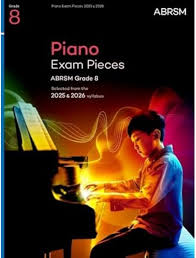 |
ABRSM Piano Exam Pieces Grade 8 2025 2026 |
| ABRSM Piano Mix 3 for Easy Piano Grades 3-4 |
 |
ABRSM Piano Mix 3 for Easy Piano Grades 3-4 |
| ABRSM Piano Prep Test |
 |
|
| ABRSM Piano Scales And Arpeggios from 2021 Guide For Practical Grades |
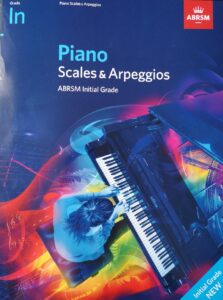 |
|
| ABRSM Selected Piano Exam 2011 2012 Grade 1 |
 |
|
| ABRSM Selected Piano Exam Grade 2 (2011 2012 ) |
 |
|
| ABRSM Specimen Aural Tests Grade 1 to 3 |
 |
|
| ABRSM Specimen Aural Tests Grade 4 & 5 |
 |
|
| ABRSM Teaching notes on piano exam pieces (2013 & 2014) |
 |
|
| ABRSM The Manual Of Scales Broken Chords And Arpeggios For Piano |
 |
|
| ABRSM Theory of Music Exams Grade 8 (The Associated Board of Royal Schools of Music) 2010 |
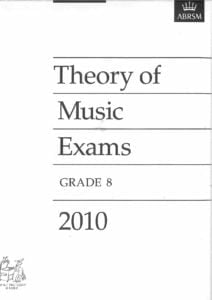 |
|
| AC/DC – Classic – Early Years – High Voltage And Let There Be Rock (Guitar Tab Songbook) |
 |
ACDC – Classic – Early Years – High Voltage And Let There Be Rock |
| AC/DC – Jam With AC/DC (PDF with MP3 audio tracks Guitar Tab Songbook) |
 |
Jam With ACDC |
| AC/DC Rock Score |
 |
|
| AC/DC, Best of (Guitar & Tablature) |
 |
Best Of ACDC (Guitar) |
| Ace Of Base – Beautiful Life | ||
| Ace Of Base – Dont Turn Around | ||
| Ace Of Base – Living In Danger | ||
| Acoustic 33 TOP Guitar Hits (Guitar Songbook) with Tablature – sheet music |
 |
Acoustic 33 TOP Guitar Hits (Guitar Songbook) – sheet music |
| Acoustic Blues Guitar By Kenny Sultan Guitar Tab |
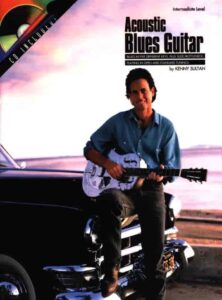 |
Acoustic Blues Guitar |
| Acoustic Blues Guitar Keith Wyatt with TABs |
 |
Acoustic Blues Guitar Keith Wyatt with TABs |
| Acoustic Blues Guitar Styles (Larry Sandberg) (with Tablature) |
 |
Acoustic Blues Guitar Styles (Larry Sandberg) |
| Acoustic Classics 42 songs Piano Vocal Guitar |
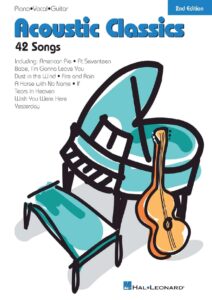 |
Acoustic Classics 42 songs Piano Vocal Guitar |
| Acoustic Guitar Bible (35 great songs) Guitar with TABs |
 |
Acoustic Guitar Bible (35 great songs) Guitar with TABs |
| Acoustic Rock (Guitar) Rolling Stones, Green Day, Pink Floyd, Bob Dylan (Songbook Guitar Tab) with Tablature |
 |
|
| Acoustic Rock 90’s, Best of – Guitar with Tablature |
 |
Acoustic Rock 90’s, Best of – Guitar |
| Acqua azzurra acqua chiara (Battisti) | ||
| Ad Te Levavi (Musescore File).mscz | ||
| Adagio (Lara Fabian) | ||
| Adagio MP3.zip | ||
| Adah’s Theme (La femme avec les yeux lumineux) Sex and the City |
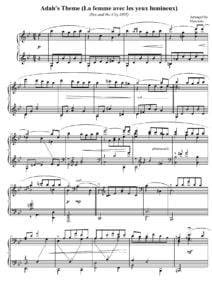 |
|
| Adah’s Theme (Le femme avec les yeux lumineux) Sex and the Cit | ||
| Adam – Adolphe Charles Holy Night Cantique-Nöel |
 |
|
| Adam – Cantique de Nöel Minuit Chretiens | Adam – Cantique de Noel Minuit Chretiens VS | |
| Adam – Derniers souvenirs d’un musicien |
 |
|
| Adam – O Holy Night | Adam – O Holy Night | |
| Adam – Souvenirs d’un musicien |
 |
|
| Adam (Cappeau) – Cantique de Noël. Easy Piano with voice or instrument (Paroles and lyrics) |
 |
Adam-Cappeau-Cantique-de-Noel- |
| Adam (Cappeau) – Cantique de Noel. Easy Piano with voice or instrument.mscz | ||
| Adam Cantique de Nöel Christmas song | Adam Cantique de noel | |
| Adam Carse – The History Of Orchestration Adam Carse |
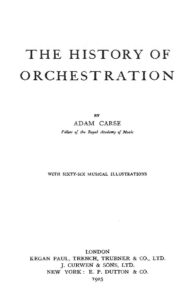 |
|
| Addams Family Theme (Musescore File).mscz | ||
| Addams Family Theme (Easy Piano) |
 |
|
| Addio Colonnello (Ennio Morricone) | ||
| Adele Songs from the Album 21 For SATB, SSA and Piano |
 |
Adele Songs from the Album 21 |
| Adele – 21 |
 |
ADELE 21 SONGBOOK |
| Adele – Chasing Pavements Piano Vocal guitar chords |
 |
|
| Adele – Easy on me (Piano solo with lyrics) |
 |
|
| Adele – Rolling in the Deep |
 |
|
| Adele – Rumor Has It |
 |
|
| Adele – Set Fire to the Rain |
 |
|
| Adele – Set Fire To The Rain (2) (Musescore File).mscz | ||
| Adele – Someone Like You | Adele – Someone Like You | |
| Adele – Someone Like You easy piano |
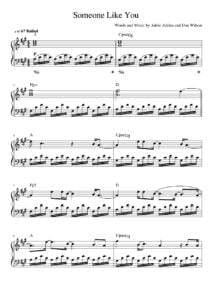 |
|
| Adele – The Best Of SongBook (12 songs arranged for easy piano) |
 |
Adele – The Best Of SongBook (12 songs arranged for easy piano) |
| Adele 19 [Piano, Guitar, Vocals] |
 |
Adele 19 [Piano, Guitar, Vocals] |
| Adele 25 Songbook |
 |
Adele 25 Songbook Contents —  |
| Adele Best Of Adele Big Note Piano (Adele Adkins) |
 |
Adele Best Of Adele Big Note Piano (Adele Adkins) |
| Adele Easy On Me Sheet Music |
 |
|
| Adele Original Keys For Singers (Adele) |
 |
Adele Original Keys For Singers (Adele) |
| Adele Skyfall (Piano Vocal Guitar Chords) | Adele Skyfall (Piano Vocal Guitar Chords) | |
| Adios Amor – Goodbye My Love as recorded by José Feliciano |
 |
|
| Adult All In One Course Level 1 With Audio Mp3 (Willard Palmer) |
 |
Lessons Alfred’s Basic Adult Piano Course Level 1 |
| Adult All In One Course Level 2 With Audio Mp3 (Willard Palmer) |
 |
Willard Palmer – Adult All-In-One Course Level 2 |
| Adult Greatest Movie Hits Piano Level 1 |
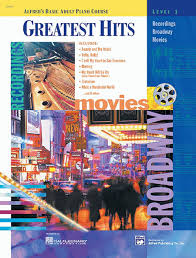 |
Adult Greatest Movie Hits Piano Level 1 |
| Adult Piano Adventures ALL-IN-ONE PIANO COURSE 1 |
 |
|
| Adult Piano Adventures All-In-One Piano Course Book 2 Book With Media Online (Nancy Faber, Randall Faber) Sheet Music |
 |
|
| Adult Piano Adventures Christmas – Book 1 (Nancy Faber Randall Faber) |
 |
|
| Adult Piano Adventures Christmas – Book 2 |
 |
Adult Piano Adventures Christmas – Book 2 |
| Adult Piano Adventures Popular Book 1 – Timeless Hits and Popular Favorites (Adult Piano Adventures Popular) |
 |
Adult Piano Adventures Popular Book 1 – Timeless Hits and Popular Favorites (Adult Piano Adventures Popular) |
| Adult Piano Course Greatest Movie Hits Piano Level 1 Recordings Broadway Movies |
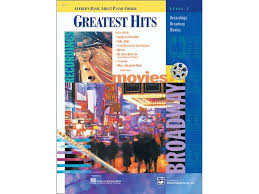 |
Adult Piano Course Greatest Movie Hits Piano Level 1 Recordings Broadway Movies |
| Advanced Harmonic Concepts by Wayne Naus (with audio MP3) |
 |
Advanced Harmonic Concepts by Wayne Naus |
| Advanced Harmonic Exercises For Jazz Piano |
 |
advanced harmonic exercises |
| Advanced Piano Solos 1 Encyclopedia by Tom Roed |
 |
Advanced Piano Solos 1 Encyclopedia by Tom Roed |
| Advanced Piano Solos 2 Complete by Tom Roed |
 |
Advanced Piano Solos 2 Complete by Tom Roed |
| Advanced Sacred Music Piano Solos by John Kraus |
 |
|
| Advanced Scale Concepts and Licks for Guitar (PDF + MP3 audio tracks Play Along) with Tablature |
 |
 |
| Aebersold – 110 – When I fall In Love – Romantic Ballads pdf with embedded audio MP3 Tracks |
 |
Jazz Play Along Vol 110 [When i Fall in Love] |
| Aebersold – 113 Embraceable You – Vocal Standards with audio MP3 Tracks |
 |
Jamey Aebersold – Vol 113 |
| Aebersold – 30 blues scale By Jamey Aebersold | Aebersold – 30 blues scale By Jamey Aebersold | |
| Aebersold – A New Approach To Jazz Improvisation Gettin’it together vol. 21 |
 |
aebersold gettin all together vol 21 |
| Aebersold – Practice Procedures For Memorizing Scales And Chords | Aebersold – Practice Procedures For Memorizing Scales And Chords | |
| Aebersold – Rapid Reference Vol 1-114 | Aebersold – Rapid Reference Vol 1-114 | |
| Aebersold – Vol 01 – How to Play and Improvise Jazz (with audio MP3) |
 |
Aebersold – Vol 01 – How to Play and Improvise Jazz |
| Aebersold – Vol 03 – The II-V7-I Progression Jazz Play Along Book + Audio Mp3 |
 |
|
| Aebersold – Vol 105 – Dave Brubeck Jazz Play Along Book + Audio Mp3 |
 |
|
| Aebersold – Vol 118 – [Groovin Jazz] (with audio MP3) |
 |
|
| Aebersold – Vol 32 – Ballads Jazz Play Along Book + Audio Mp3 |
 |
|
| Aebersold – Vol 34 – Jam Session Jazz Play Along Book + Audio Mp3 |
 |
Includes MP3 Play along themes as Blue moon, The shadow of your smile, Over the rainbow, etc. |
| Aebersold – Vol 45 – [Bill Evans] Jazz Play Along Book + Audio Mp3 |
 |
Aebersold – Vol 45 – [Bill Evans] |
| Aebersold – Vol 58 – Unforgettable Standards Jazz Play Along Book + Audio Mp3 |
 |
aebersold unforgettable standards sheet music |
| Aebersold – Vol 76 – David Baker – How To Learn Tunes (A Jazz Musician’s Survival Guide) |
 |
how to learn tunes |
| Aebersold 25 How To Practice By Jamey Aebersold | Aebersold 25 | |
| Aebersold Antonio Carlos Jobim Vol 98 – Bossa Nova Songbook Jazz Play Along Book + Audio Mp3 |
 |
Aebersold Antonio Carlos Jobim Vol 98 – Bossa Nova Songbook |
| Aebersold Anyone Can Improvise – 52 Points To Remember | Aebersold Anyone Can Improvise – 52 Points To Remember | |
| Aebersold Jazz EAR training (with audio MP3) |
 |
Aebersold Jazz EAR train |
| Aebersold Jazz Handbook 09 Tips For Learning A New Tune & Practice Procedures For Memorizing |
 |
Aebersold Jazz HANDBOOK |
| Aebersold Jazz Play-Along Books & audio MP3 1st Part Full Collection – Vol 1- 40 (with MP3) for all instruments |
Compressed file  Aebersold Full Collection Part 1 – Vol 1- 40 Aebersold Full Collection Part 1 – Vol 1- 40 |
40 volumes with MP3 Aebersold Book Index Vol.001-106 |
| Aebersold Jazz Play-Along Books & audio MP3 2nd Part Full collection Vol 41- 75 for all instruments | Compressed fileAebersold Full Collection Part 2 – Vol 41- 75.. | 35 volumes with MP3 Aebersold Book Index Vol.001-106 |
| Aebersold Jazz Play-Along Books & audio MP3 3rd Part Full Collection – Vol 76- 112 (with MP3) | Compressed fileAebersold Full Collection Part 3 – Vol 76- 112 | 37 volumes with MP3 Aebersold Book Index Vol.001-106 |
Carl Czerny, Viena (Austria) 1791 – Viena (Austria) 1857
Piano Technique:
Czerny – The School of Velocity Op. 299 No. 39 (sheet music)

Czerny – Le Perfectionnement, Op.755, No. 24 (with sheet music, partition)
Czerny – 100 Progressive Studies, Op 139 No 1
Czerny – 30 New Studies in Technics Études de Mécanisme Vorschule zur Schule der Gelaeufigkeit Op. 849 No. 1
Czerny – 30 New Studies in Technics Études de Mécanisme Vorschule zur Schule der Gelaeufigkeit Op. 849 No. 2
Czerny – 100 Progressive Studies, Op.139 No. 16 to No. 20
Carl Czerny. Biography
- Date of Birth, February 21, 1791
- Place of birth, Vienna, Austria
- Deceased July 15, 1857 (at the age of 66)
Few composers have been as interpreted as Carl Czerny in the history of music, and yet little is spoken or written in Spanish about this Viennese composer of the early romantic period.
“Hated” by numerous and still current generations of students and appealed for its virtues by the same number of teachers; Czerny stood out above all for the great legacy of his important didactic work, an area that few composers usually dare to tackle, and in which only some -and very few- are successful.
Owner, moreover, of an important and unjustly ignored instrumental work; Czerny’s didactic work is a milestone in the history of pedagogy and his incessant effort and work deserve fair recognition.
Karl Czerny was born on February 21, 1791 in Vienna, the Imperial and Music-loving Capital of Austria, curiously the same year as Mozart’s death.
His father, Wenzel (Václav) Cerný (The surname “Cerný” was later Germanized to “Czerny”, born in Nimburg in 1750, was a talented musician, amateur violinist (like his own father, Karl’s grandfather), who He had been educated in a Benedictine monastery in Prague (today the capital of the Czech Republic) and, in addition to the violin, he played oboe, organ and pianoforte with great talent.
Settling in Vienna in 1786 with his wife, Wenzel established himself as a skilled music and piano teacher and years later gave birth to their only son, Karl Czerny. Still living in Austria, the family maintained a strong attachment to Czech culture, and, in fact, little Czerny did not speak German until he was 10 years old.
During the early years of his life, Karl Czerny took keyboard lessons from his father, and soon demonstrated remarkable compositional and performance skills.
His first attempts at musical writing (never published) began around the age of seven, and in fact by age ten he was able to play “…clearly and fluently any composition by Mozart and Clementi…”, a virtuosity that went hand in hand with his comprehensive and surprising lifelong study of the work of Ludwig V. Beethoven (1770-1827).
In his autobiographical notes, Czerny once described his childhood as “carefully isolated from other children”, and after those first years of permanent study with his father, he continued his training with fellow Czech Wenzel Krumpholz (pianist and violinist of the Orquesta of the Imperial Court, 1761-?).
In 1800, at the age of 9, Karl gave his first concert in his hometown, the Concerto in C minor K. 491. Mozart’s own style had impressed him very favorably years before, listening to the same concerto performed by Johann Nepomuk Hummel. (1778-1837), of Slavic-Hungarian origin and sometime a disciple of Mozart.
The following year, his teacher introduced him to Beethoven, and he performed for him the first movement of Mozart’s Piano Concerto in C Major K. 503 and Beethoven’s own “Pathetic” Sonata. From then on, Czerny became not only a devoted disciple of Ludwig but also an important disseminator of his work and a dedicated and careful interpreter of the new piano forms.
Ludwig once wrote of him: “…I who sign below have the pleasure to testify that young Carl Czerny has made an extraordinary advance on the piano, beyond what could be expected at the age of fourteen. I think he deserves all possible help, not only for what I have just stated, but for your amazing memory… “
Ludwig once wrote of him: “…I who sign below have the pleasure to testify that young Carl Czerny has made an extraordinary advance on the piano, beyond what could be expected at the age of fourteen. I think he deserves all possible help, not only for what I have just stated, but for your amazing memory… “
So close was the relationship between the two that Beethoven entrusted Czerny, years later, with the musical education of his nephew Carl, although he never stopped correcting and suggesting study and fingering techniques.
Parallel to his career as an interpreter, Czerny at the age of 15 began to venture into teaching.
At the age of 19, he met the great Italian pedagogue Muzio Clementi (1752-1832) in Vienna, whose work “Noveau Gradus ad Parnassum” had an impact on our composer and inspired him in his subsequent and magnanimous didactic creation.
Despite Czerny being an excellent performer, with virtuosic mastery and unrivaled ease and memory, at the end of his adolescence he abandoned his career as a performer and devoted himself almost entirely to teaching piano and composition.
His dedication as a teacher (more than hard, since he gave classes during the day and composed for the students at night) began to bear fruit, and very soon his name acquired fame in bourgeois and aristocratic circles, who competed to take lessons with him. Many of his disciples followed his didactic line, such as Liszt’s famous rival, Sigismond Thalberg (1812-1871); the Hungarian Stephen Heller (1813-1888) and the legendary Polish piano teacher Theodor Leschetizky (1830-1915).
One of his most important students, however, is Ferenc (Franz) Liszt (1811-1886), to whom he taught from 1822 and for two years. The Austro-Hungarian composer dedicated his “Transcendental Studies” to Czerny.
Fryderyc Chopin (1810-1849) also visited the Master in 1829, although Chopin did not retain a favorable opinion of Karl… (Although Chopin and Czerny maintained a prolific correspondence (which is still preserved today), in which they expressed mutual admiration , Chopin did not always have a good opinion of Karl’s music.
Although it may be common that Chopin did not get good first impressions of people (remember the accounts of the Pole when he first saw the writer George Sand), he was many times unfair in his comments to third parties.)
“…He is a good guy (…) but nothing more (…) he has arranged another overture for eight pianos and sixteen pianists and seems delighted with it” (…) “Czerny was warmer than any of his compositions” Chopin said ironically, after to visit him for the first time in Vienna.
At this time, Czerny already had an enormous number of compositions, which reached over opus 800 (symphonies and chamber works that were not well received by critics), and many of them were technical studies and development exercises for pianists: hundreds of works that are today the foundation of the study of the instrument.
All of his didactic works were quickly published in Vienna, and with such success among the public that these studies are still included in the programs of all conservatories in the world today.
Among these pieces, “The School of Speed” and “The Art of Fingering” stand out.
Czerny’s literal career as a composer began in about 1812, after copying many works by Bach, Scarlatti, and other early composers.
He occupied his free hours studying the art of orchestration and composing, first essays, then complete works, symphonies and piano works.
In his chamber works (sonatas for piano four hands, piano and strings, etc.), a notable Beethovenian influence is perceived.
Very unfortunately, many of his works were never published, especially sacred choral works (Masses, Offertories, Graduals, etc.). In addition, little material has been recovered from his early days as a composer, as Czerny did not keep an organized record of each of his works at that time.
His deep sensitivity and delicacy of style can be seen in works such as his “Sentimental Sonata in C minor, Op. 10 for four hands”; or in his Piano Concerto in C Major, Op. 153.
His very dedication to teaching demonstrates his dedication and his love for the piano.
At the age of 51, Karl begins to write a few short autobiographical notes, a custom more than widespread in the romantic era, “Erinnerungen aus meinen Leben” (“Memories of my Life”, recently published in Austria.
Czerny led a rather solitary life, living with his parents until his mother’s death in 1827 and his father’s death in 1832. He never married, living alone until the day he died.
Despite not having close relatives, he did have many cats (his students always commented on this eccentricity), and, when he was not composing or teaching, he devoted himself entirely to his animals.
On July 15, 1857, at the age of 66, Karl Czerny died at his home in Vienna. His considerable fortune made as a teacher, composer and performer was donated to the Vienna Conservatory and numerous charitable institutions. Many of his works were unfairly forgotten; and his pedagogical work, which today is divided into four categories, continues to be an iron mainstay in the study of every pianist who begins a correct preparation of his technique.
The Ukrainian-Romanian composer and musicologist Eusebius Mandyczewski (1857-1929) cataloged and prepared several Czerny editions, including more than 300 sacred works, as well as finding numerous misplaced manuscripts.
Your contribution has also been very valuable in the recognition of this author. Still not receiving the best of attention from the critics of his day (not, at least, not by Schumann in his important music newsletter), Czerny was quite appreciated by numerous people who trusted him as a teacher and pedagogue.
Czerny’s work as a composer and teacher must be recognized as such; because he comes to life every day on the stands of thousands of pianists who give their effort and passion to the instrument.
The work of the hard-working teacher who taught by day and composed by night is an inspiring figure we should think of as we approach his vast and loving oeuvre.
In 1821, the nine-year-old Franz Liszt began a two-year period studying piano with Czerny. The teacher remarked that he had ‘never had such an impatient, talented and hard-working pupil’, but Czerny lamented that Liszt had begun his performance career too early, and without adequate or sufficient training in composition. But Liszt was an impatient student, despite his youth promising a long life as a virtuoso performer.
He also had as students Anna Caroline Oury, Theodor Döhler, Leopold von Meyer, Louis Lacombe, Albert Sowinski, Sigismund Thalberg, Alfred Jaëll and Queen Victoria, and already at the end of his profession Ivan Ivanovich Armsheimer and to Friedrich Brandeis.
Czerny did not consider his ‘brilliant concert pieces’ to be ‘serious music’. But in this category, he placed his symphonies, overtures, and concertos for piano, many of which are still unknown today, and some of them languish among his hundreds of unpublished manuscripts.
In addition to many technical studies, Czerny published sonatas, sonatinas and hundreds of shorter works, many of which were arranged for piano for four hands in various editions.
He also published a plethora of works based on the national anthem, popular songs, and other well-known songs. In addition to all the compositions cited during the biography, he left the works written in German: Praktische Schule der Composition (Bonn, 1840), and Umriss der Musikgeschichte (Mainz, 1851).
Czerny’s works include a large number of masses, Requiems, symphonies, concertos, sonatas and string quartets. None of these works are regularly performed today. Nevertheless, Czerny’s numerous didactic works for piano continue to be used in the teaching of this instrument.
The composer and musicologist Johann Theodor Viehmeyer (1870-1947) published his work Schule der Virtuosen.
